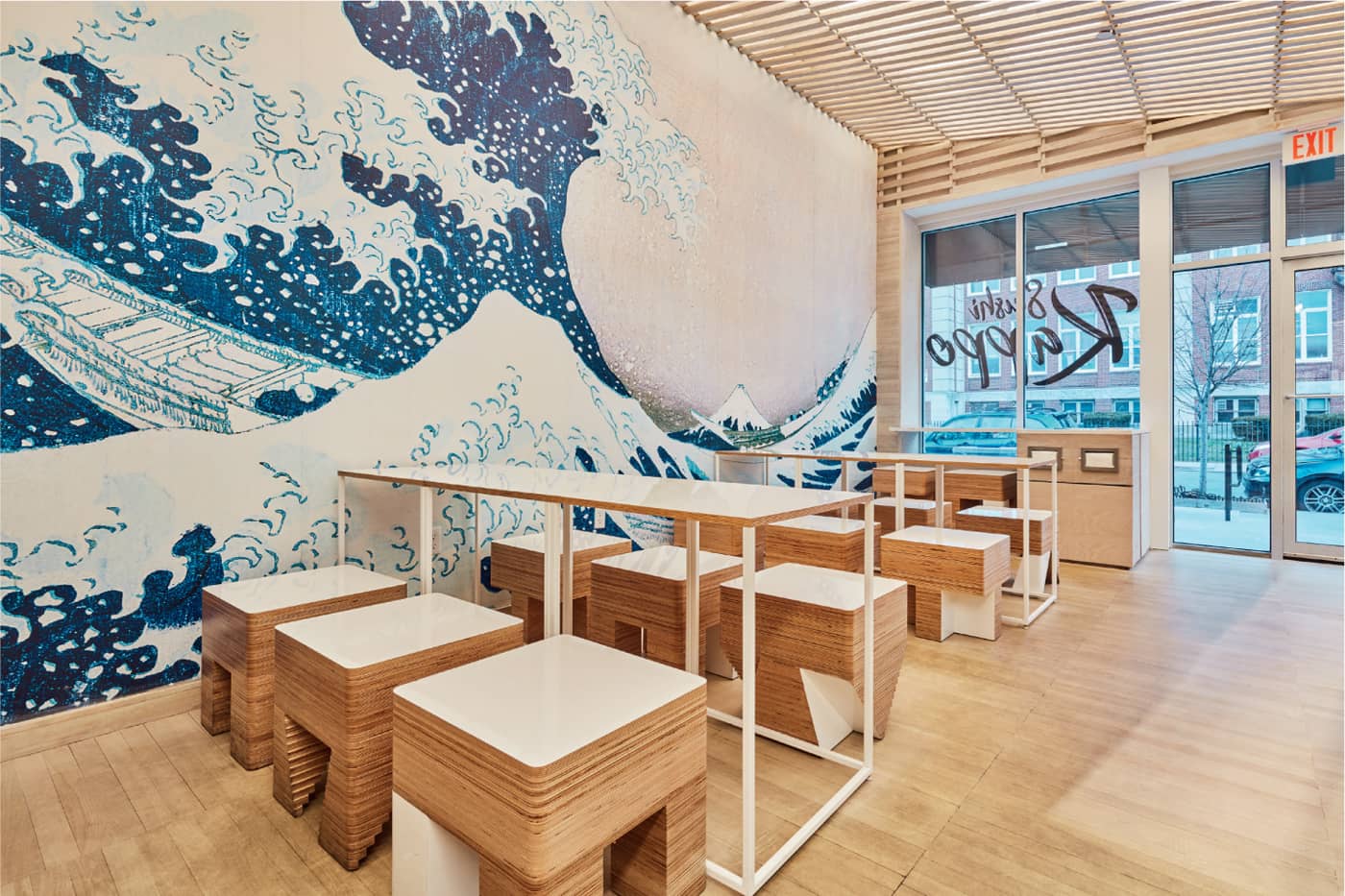60 Movement
The quality in design that represents or suggests motion.
Motion is the change of position over time of an object or body, but movement is the quality that represents a suggested motion. Understanding the principle of movement might be easier to think of in terms of two-dimensional pieces, such as an artwork. Artists often use forms and colors to imply movement and guide the viewer’s eye in, through, along, and out of a composition. Lines, forms, and shapes can affect the pace, direction, and legibility of movement.
A three-dimensional volume offers the development of a more complex narrative. In a room, the composition of elements can move the viewer’s eye through the space, often to a focal point or focal area. In some cases, movement in a design describes the quality of the physical motion or circulation of the user across a hallway, up a staircase, or through a series of rooms. For example, visitors tend to move contemplatively through a museum or gallery, but circulate more purposefully in a gym or health center.
Tied closely to rhythm, movement in interiors can be achieved by repetitive design elements such as lines, textures, colors, and patterns. The incorporation of movement into a design solution will ultimately lead to a more dynamic experience of a space.

Katsushika Hokusai’s woodblock print The Great Wave off Kanagawa (1823) is an example of composition that explores movement. The curved forms of the waves and mountains tend to move the viewer’s eye across the artwork from the wave on the left, along the boats, to the mountain, and out to the right.

Drew Mandel’s use of sinuous lines and continuous surfaces in this staircase emphasize the vertical movement through this contemporary addition to a house in Toronto, Canada.

This sushi restaurant by BOS|UA uses Hokusai’s print as a mural wall.
